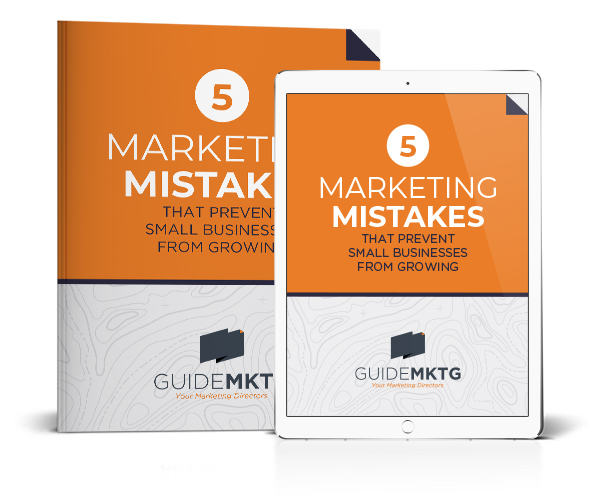Are your employees or team distracted and disengaged? Are they working on things that don’t seem to be moving your company forward? A motivating mission statement just might be the solution.
More than just a collection of words on a website or office wall, a motivating mission statement serves as the compass, guiding a company and all its employees toward a desired result.
What is a mission statement?
A well-crafted mission statement is more than a mere formality- it should be the heartbeat of an organization.
A good mission statement is a short, succinct summary of what an organization is working toward. The kind of mission statement we recommend using is more of a concise goal statement than a lofty company aspiration meant to last for years and years.
A mission statement should be between one and three sentences so that it is both motivating and memorable. It should be a tool to help all employees understand how your company’s services help your target audience and which actions they can prioritize to help the company grow.
Unfortunately, most mission statements miss the mark. They are usually long, ambiguous statements that only the higher-ups know about and understand. This leaves the rest of the employees to try and figure out the priorities and meaning behind their job all on their own.
Don’t be like most companies. Keep reading to create a mission statement that propels your company, and your employees, toward a shared goal.
Why does every company need a mission statement?
As one of Donald Miller’s books, Hero on a Mission, explains, we all want to be working toward something. We want to be the heroes of our own lives.
Imagine getting up every day to go to work for a business that never bothered to tell you why they exist. You don’t understand the company’s purpose, what their overarching goal is or how your daily tasks contribute to anything meaningful. You’d probably feel disengaged, frustrated, and eventually search for a job that feels a bit more “fulfilling”.
Let’s say you find a new job where you are still doing the same kind of work. However, you are welcomed into this new company by a great mission statement that paints a clear vision of where the company is headed. They explain exactly why your role matters and what they want you to focus on to help the company succeed.
You’d likely feel engaged by this new company culture and be much more likely to offer up creative ideas. You’d know what makes the company unique and why you should continue choosing to work there day after day. You’d provide outstanding customer service because you’d know that what you do matters.
That is the power of an effective mission statement. It provides a sense of purpose that goes beyond the bottom line. It answers the fundamental question: Why does this company exist? Why does my job matter?
What if you already have a dull mission statement?
Let’s say your company already has a mission statement that is pretty much the poster child for common mission statement mistakes. It’s long, dull, confusing and meant to last ‘forever’. No one understands it and they are definitely not motivated by it.
Yet, the executives who wrote the existing mission statement are very proud of their useless creation and not about to give it up.
All hope is not lost. You can still unite the team around a shared goal without ditching the current mission statement.
Donald Miller suggests solving this problem by giving this new version of your company’s mission statement a different name. Call it a goal statement, a benchmark or even a mini-mission. Don’t try to replace the old version, suggest that the two can work together.
The creators of the existing, albeit useless, mission statement can keep their “masterpiece” and you can still add a good mission statement that actually inspires people and keeps the company moving forward to the mix. Everybody wins.
How to Write a Motivating Mission Statement
Now, on to the good stuff, how to actually write your mission statement. It is way simpler than most companies make it. To create a great mission statement, just follow this simple formula: We will accomplish X by X because of X.
(This formula came from a training inside Business Made Simple called “How to Fix Your Mission Statement in One Hour”. If you have a membership, be sure to watch the training for additional company mission statement examples you can use as inspiration for your own.)
Step 1: Set A Goal
The first X in the formula, “We will accomplish X…” refers to the company’s overarching goal. Donald Miller recommends choosing your top three financial goals.
Although it may be tempting to choose a goal that isn’t related to finances, like providing excellent customer service or improving company culture, those are too ambiguous to motivate anyone and impossible to measure.
If you tell me we want to improve company culture, I have no idea how to make that happen. If you tell me we want to sell 47 units of dog food, I know exactly what actions to prioritize.
At the same time, when you set a goal connected to finances, that doesn’t mean you just hound the sales team and let everyone else coast. The point of a mission statement is to get everyone working together to achieve the same goal. Every employee in your company should know what their role is in helping the company achieve its goal.
Step 2: Set A Deadline
The second X in the formula “by X…” refers to the deadline, when you want to achieve the goal. Deadlines create urgency and help keep everyone uber-focused on the tasks that matter most.
Donald Miller recommends sticking with a 2-year timeframe. However, we’ve also seen companies set shorter timeframes, like yearly or quarterly goals, to increase the sense of urgency even more.
You want to set a goal that is both aspirational and achievable. You don’t want to set your team up to fail by asking them to do the impossible but you also don’t want to set a goal that is so easy no one feels the need to push for it.
Step 3: Connect It To Your Why
The third and final X in the formula “…because of X” is where you identify the reason why your company exists and how achieving this goal alleviates human suffering in some way. (Trust me, that isn’t as woo-woo as it sounds.)
Injustices don’t have to be huge things like solving world hunger. They can be any problem your ideal client is currently facing that your company could help them avoid. Here are a few examples:
“No one should pay more in taxes than they legally owe.” Pine & Co CPAs
“No one should waste good money on bad marketing.” Guide MKTG
“Everyone deserves the financial confidence to live the way they want in retirement.” Cooper Davis
“Your asphalt should look great and last longer.” Stripe A Lot
If you aren’t sure what problem or injustice your company solves, look back at your One-Liner. (If you don’t have a One-Liner or know what one is, schedule a call with Guide MKTG so we can help you clearly explain what your company does and why it matters.)
After you’ve defined all three components of your mission statement, put it all together and share it with the world! Or at least all the people you work with.
Step 4: Remind People of Your Mission Statement. A Lot.
Now, this is where progress happens.
Mission statements on paper do no good. Mission statements in action get people moving.
Make sure everyone in your company knows the mission statement and is using it to drive their every day actions and decisions. You want to remind people of the mission statement as often as possible. You could:
- Start meetings by reviewing the mission statement.
- Celebrate people for taking actions that bring the company closer to reaching the goal.
- Encourage your team to use it as a filter for their decision-making process.
- Ensure every employee and department knows their role in helping the company achieve its goal.
- Give status updates during company-wide meetings.
The more you can bring it up, the better. People need to hear things at least seven times before the message sticks and is understood. Remind them of your organization’s purpose and goals so often that it turns into a company joke. If they start making memes about it, even better. That means they got it. There is no such thing as too many reminders.
Without a clear and compelling mission, your company is headed toward stagnant growth and disengaged staff.
With a mission statement that is easy to understand and applicable to everyone, you can unleash the full potential of your team and create a company culture of purpose and excellence.
As the saying goes, a ship without a rudder is destined to drift. Don’t let your company get lost at sea. Craft a compelling mission statement that keeps everyone moving forward.
Need a Thinking Partner?
If you are struggling to figure out what big problem your company solves, or need help turning your current mission statement into one that motivates and reignites your team, schedule a call with Guide MKTG today.
We will help you clarify your company messaging and create a marketing plan that compels everyone forward. You’ll know exactly what marketing actions will help your company reach its goals and you’ll have the support of an entire marketing team to help you make it happen.





